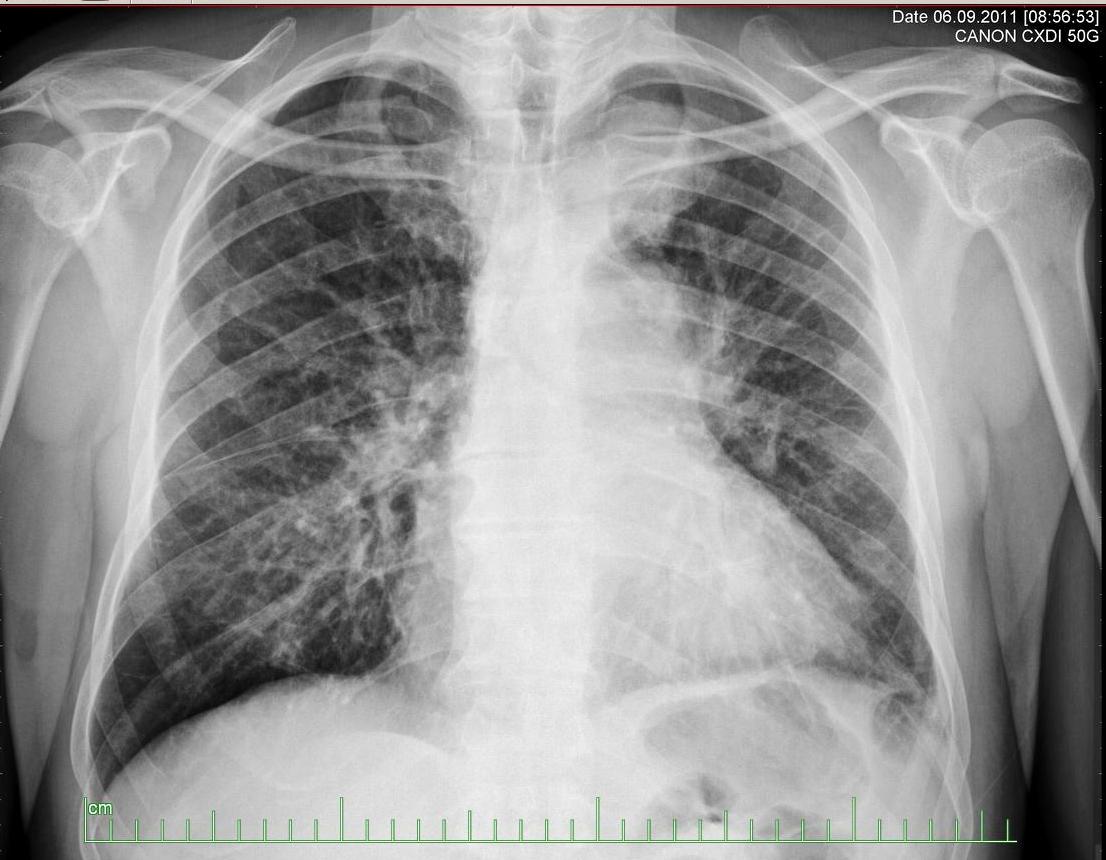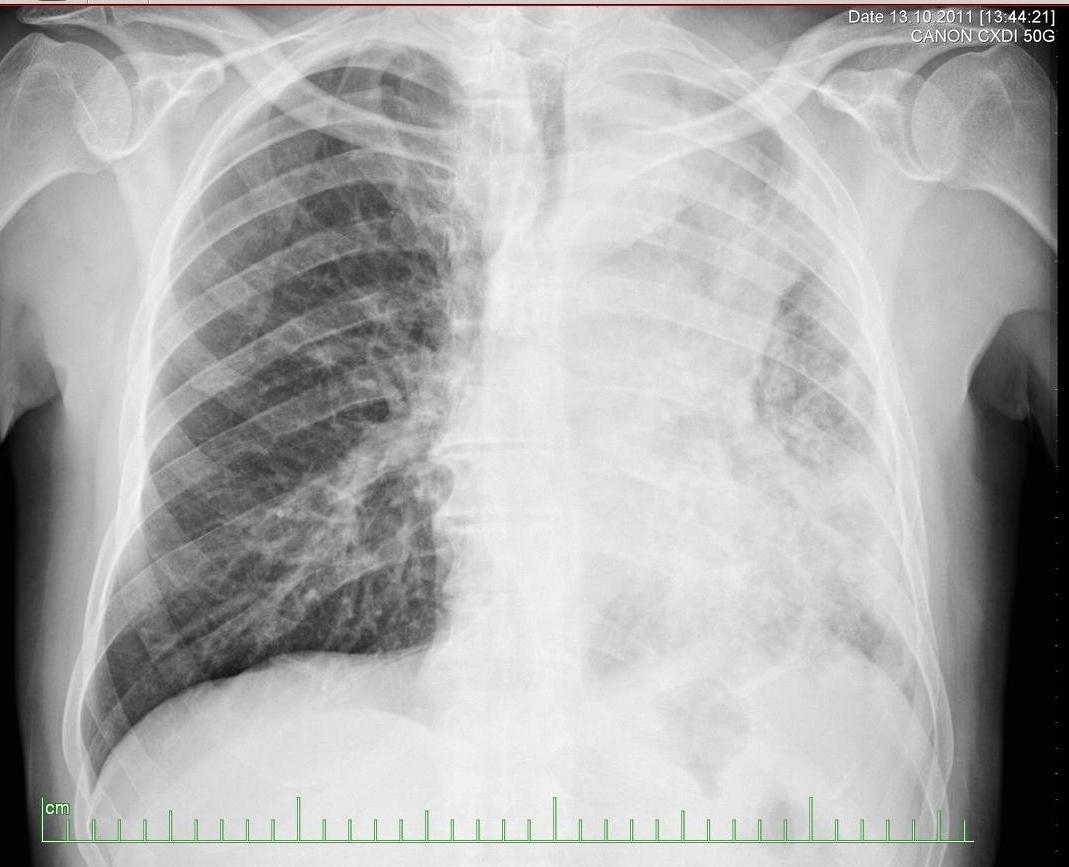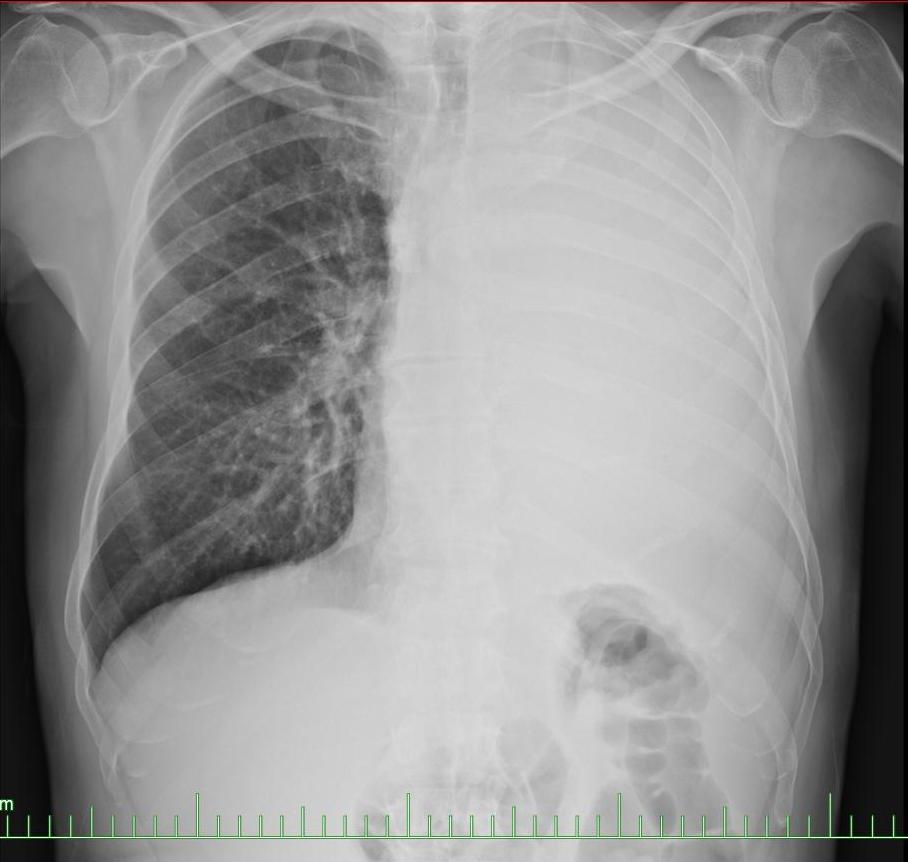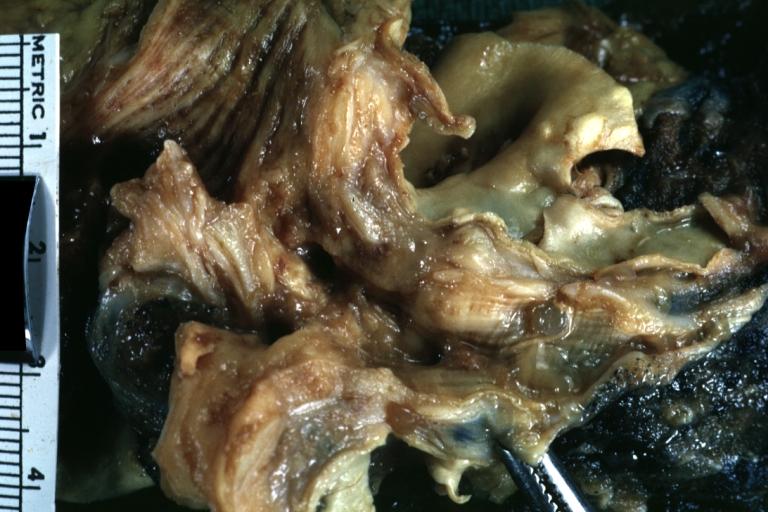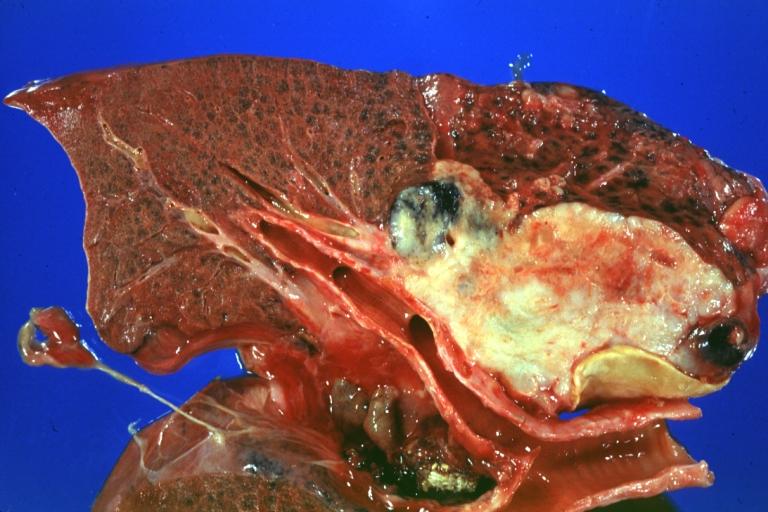Small cell lung cancer
For patient information click here
Template:DiseaseDisorder infobox
|
Small Cell Carcinoma of the Lung Microchapters |
|
Differentiating Small Cell Carcinoma of the Lung from other Diseases |
|---|
|
Diagnosis |
|
Treatment |
|
Case Studies |
|
Small cell lung cancer On the Web |
|
American Roentgen Ray Society Images of Small cell lung cancer |
|
Directions to Hospitals Treating Small cell carcinoma of the lung |
|
Risk calculators and risk factors for Small cell lung cancer |
Editor-In-Chief: C. Michael Gibson, M.S., M.D. [1]
Synonyms and related keywords: Oat Cell Carcinoma, Reserve Cell Carcinoma, Round Cell Carcinoma, Small Cell Lung Carcinoma, Small Cell Lung Cancer
Overview
Historical Perspective
Pathophysiology
Epidemiology and Demographics
Risk Factors
Screening
Causes
Differentiating Small cell carcinoma of the lung from other diseases
Natural history, Complications, & Prognosis
Diagnosis
History and Symptoms | Physical Examination | Laboratory tests | Electrocardiogram | X Rays | CT | MRI Echocardiography or Ultrasound | Other images | Alternative diagnostics
Treatment
Medical therapy | Surgical options | Primary prevention | Secondary prevention | Financial costs | Future therapies
References
Limited-stage disease
At the time of diagnosis, approximately 30% of patients with SCLC will have tumor confined to the hemithorax of origin, the mediastinum, or the supraclavicular lymph nodes. These patients are designated as having limited-stage disease, and most 2-year disease-free survivors come from this group. In limited-stage disease, median survival of 16 to 24 months with current forms of treatment can reasonably be expected. A small proportion of patients with limited-stage disease may benefit from surgery with or without adjuvant chemotherapy; these patients have an even better prognosis.
Extensive-stage disease
Patients with tumors that have spread beyond the supraclavicular areas are said to have extensive-stage disease and have a worse prognosis than patients with limited-stage disease. Median survival of 6 to 12 months is reported with currently available therapy, but long-term disease-free survival is rare.
Prognostic factors
The pretreatment prognostic factors that consistently predict for prolonged survival include good performance status, female gender, and limited-stage disease. Patients with involvement of the central nervous system or liver at the time of diagnosis have a significantly worse outcome. In general, patients who are confined to bed tolerate aggressive forms of treatment poorly, have increased morbidity, and rarely attain 2-year disease-free survival; however, patients with poor performance status can often derive significant palliative benefit and prolongation of survival from treatment.
Regardless of stage, the current prognosis for patients with SCLC is unsatisfactory even though considerable improvements in diagnosis and therapy have been made during the past 10 to 15 years.
Chest X-Ray
Images shown below are courtesy of Cafer Zorkun MD and copylefted
-
Chest x-ray: Small cell carcinoma of the lung. At the time of diagnosis.
-
Chest x-ray: Small cell carcinoma of the lung. Five weeks later.
-
Chest x-ray: Small cell carcinoma of the lung. Two months later.
Pathological Findings
-
Histopathologic image of oat cell carcinoma of the lung. Gross fixed tissue opened bronchus at hilum showing tumor close-up.
-
Lung: Carcinoma: Gross natural color good photo of left upper lobe neoplasm extending into mediastinal pleura and surrounding portion of aorta node metastasis easily seen small cell carcinoma (unusual spindle cell areas)
Related Chapters
External links
- Neuroimmunology - by Abid R Karim, Birmingham UK, at University of Birmingham Medical School
- Image at Tulane University
